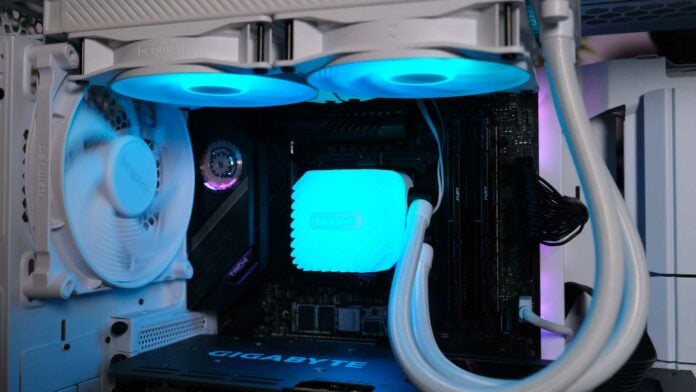Despite dipping its toe in the world of colourful lights, RGB isn’t something you’d normally associate with German manufacturer be quiet!, but that’s about to change. Light Loop 240 certainly knows how to make an entrance as one of the brightest AIO coolers I’ve tested. Fortunately, it’s more elegant than tacky, evoking images of the Northern Lights rather than Vegas.
Coming in 240mm and 360mm versions, it’s a shame there’s no 280mm model available, particularly as its Light Wing LX fans come in 140mm. It’s an increasing trend to lean more towards the most popular form factors, and it’s not without merit. AIOs built around 120s are pretty good at slinking into small form factor systems built around dinky cases.
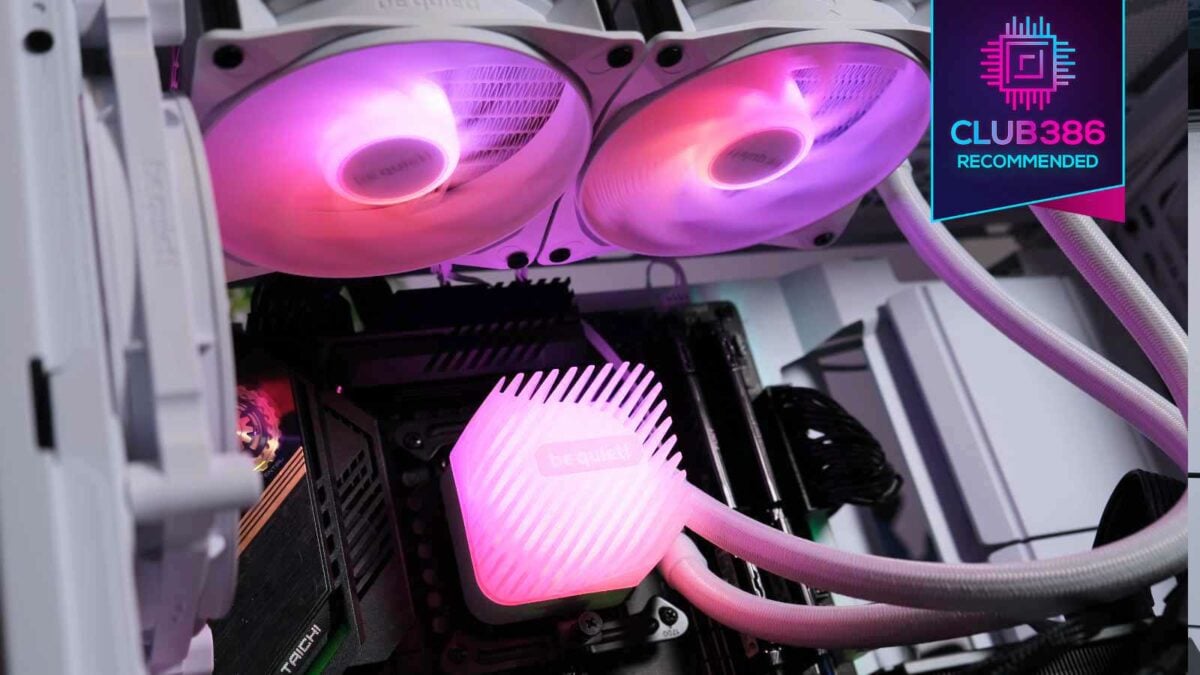
be quiet! Light Loop 240
£120 / $130
Pros
- Jaw-dropping RGB lights
- Refillable with extra coolant
- ARGB hub included
- Black or white options
- Wonderfully chill
Cons
- No 280/420 models
- Fixed logo
Club386 may earn an affiliate commission when you purchase products through links on our site.
How we test and review products.
On paper, Light Loop 240 looks like the natural evolution of Pure Loop 2. The radiator carries the same 277mm x 120mm x 52mm (H x W X D) dimensions, but the pump face is distinctly different, with 18 frosted fins swiping across its diagonal. Much to my chagrin, you can’t remove the logo, which seems like a missed opportunity for creators and brands to customise their own. At the very least, the white model does its best to let the 16 RGB LEDs shine without getting in the way.
It’s not all style over substance, as beneath lies a new pump with a progressive integrated circuit (IC) that keeps noise levels low. As much as I love Arctic Liquid Freezer III 420, the pump can get quite vocal at full tilt, while Light Loop doesn’t. This pairs nicely with a redesigned jet plate and cold plate for contact against the best CPUs out there, specifically targeting Ryzen 9 and Core i9.
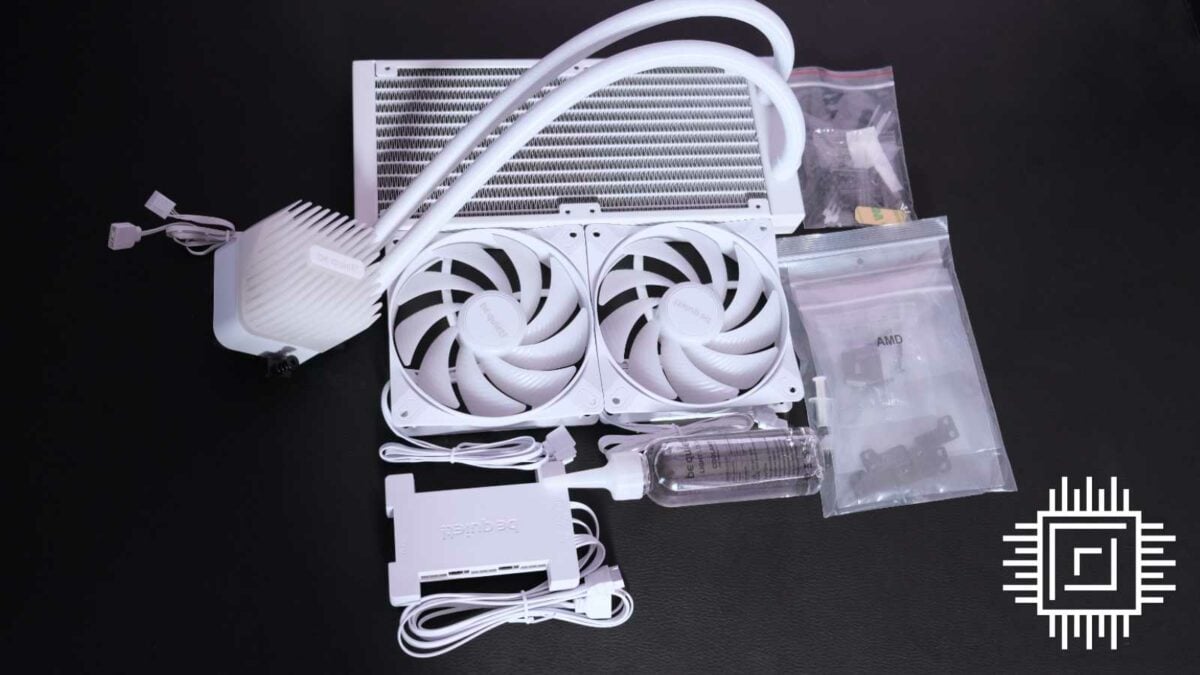
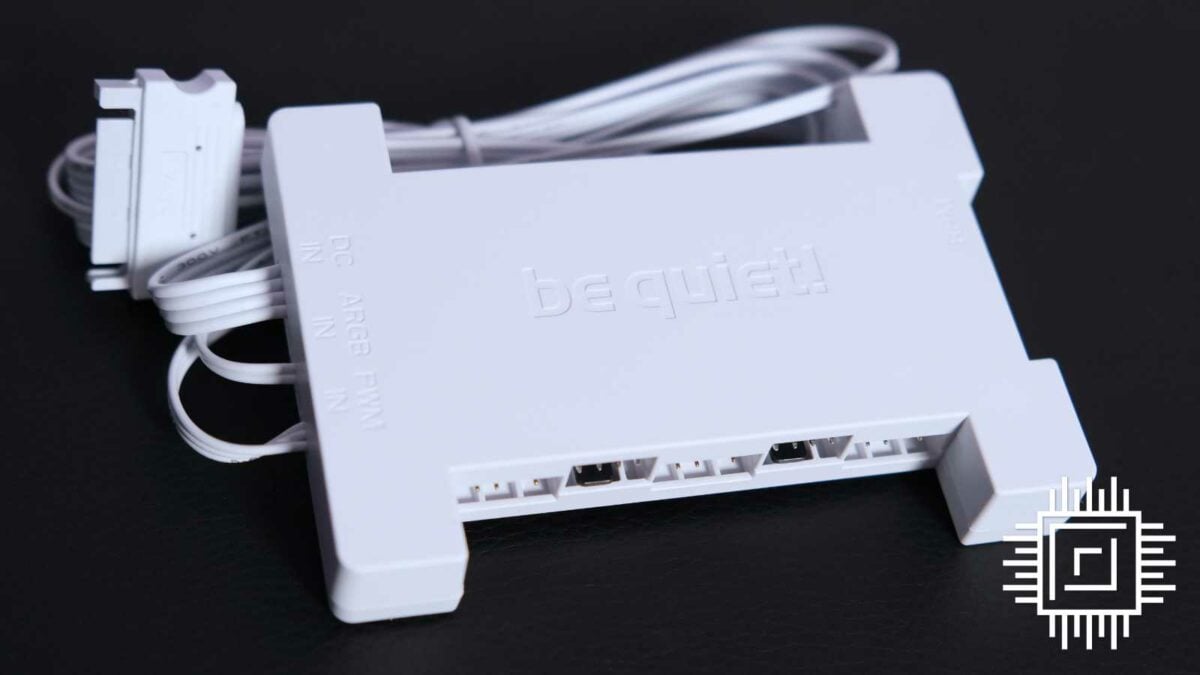
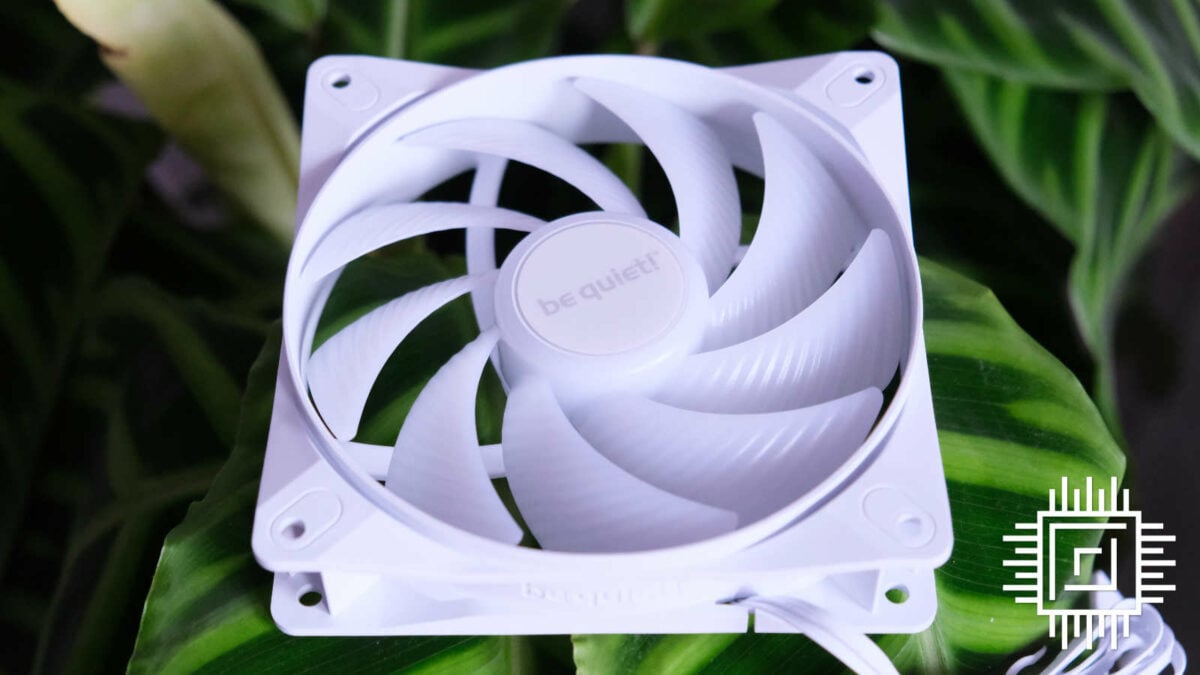
Most coolers I’ve tested in 2024 come with fans pre-installed, saving you the hassle of fitting them. For better or worse, Light Loop bucks this trend by providing two Light Wing LX high-speed blowers in the box. While I enjoy the convenience, leaving them detached gives you the option to choose your configuration ahead of time and avoids the extra faff of attaching the included ARGB PWM hub. Besides, how much time does pre-installation really save you?
Although Light Wing LX shares its name with its ring-lit predecessors, they’re entirely new fans. Specs vary depending on model, but these high-speed 120mm variants spin up to 2,100rpm, which is the fastest of the lot. It’s no surprise this asks for a smidgen more electricity to run, demanding 5.4W a pop. In return, they push as much as 61.8cfm airflow and a whopping 2.51mmH2O static pressure.
Dig a little deeper, and you’ll find a closed-loop motor to keep fan speeds consistent, even when whooshing through a thick radiator. Light Wing LX also features a new frosted designed on its nine fan blades to enhance its lighting effects. Thankfully, this isn’t exclusive to the white model, as the black versions similarly glow like a night light. Kudos!
It stands to reason that if the fans are brand new, so too is the hub. A marked improvement over V1 included with standard Light Wings, this new beast features six PWM splitters alongside six three-pin ARGB connectors. You don’t necessarily need it to control the RGB, as that relies on your corresponding motherboard vendor – MSI Mystic Light and Asus Aura, for example. That said, it makes it that much easier to install and synchronise, having everything in one place.

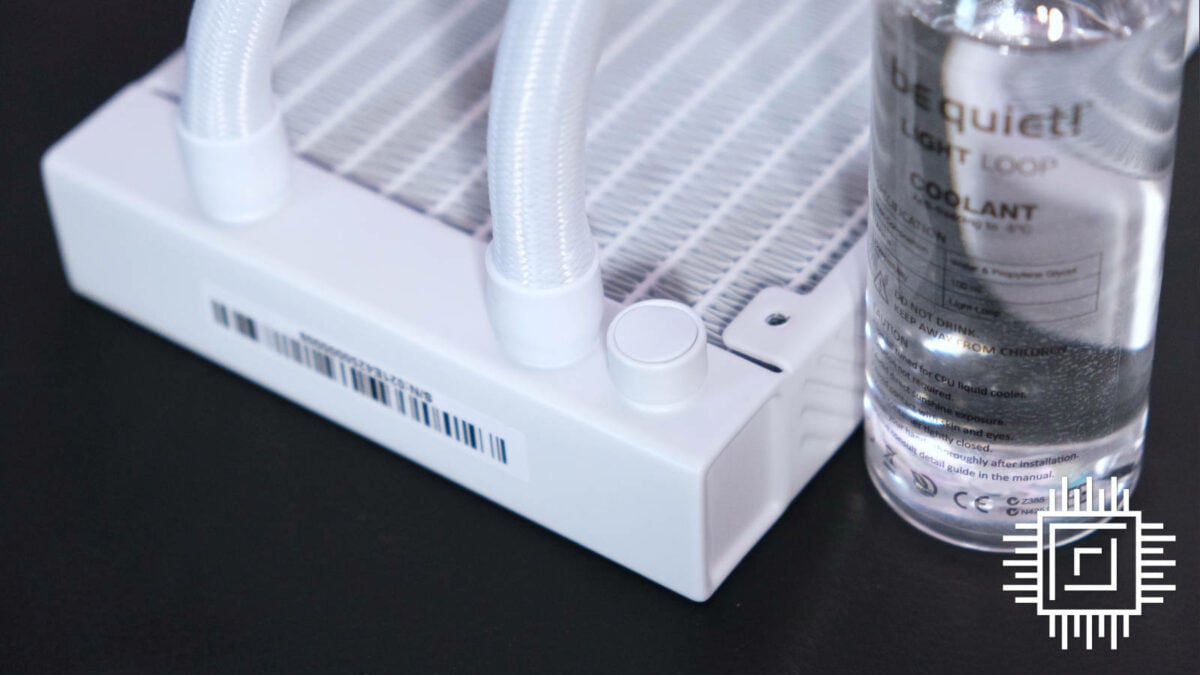
Perhaps my favourite part of any modern be quiet! AIO cooler is its refillable port. It should be a long while before you need to use the bundled bottle of coolant, but liquid naturally evaporates over time. Whereas other coolers largely leave you doomed when they start to lose their buzz, you can easily get Liquid Loop back to peak performance by juicing it up again. It’s peace of mind like no other.
Pricing is as simple as it gets for multiple colourways: black is cheaper and white costs a small $5 premium. As be quiet! explains, this is because it’s far harder to mold every component in the same shade. Admittedly, Light Wings LX 120mm PWM high-speed fans are a touch more bleached than the creamy coloured radiator because of the difference in plastic and metal. Fortunately, it’s hard to notice when the RGB is on full, taking up the spotlight.
| MSRP | |
|---|---|
| be quiet! Light Loop 240 (black) | $129.90 / €129.90 |
| be quiet! Light Loop 240 (white) | $134.90 / €134.90 |
| be quiet! Light Loop 360 (black) | $159.90 / €159.90 |
| be quiet! Light Loop 360 (white) | $164.90 / €164.90 |
Should you fancy kitting out the rest of your system with the same fans, they come in 120mm and 140mm flavours, both high-speed and standard. You’ll need to purchase white models in bundles of three, but in return, the triple-pack is the same price no matter which colour you prefer.
| Single pack (black) | Triple pack (black or white) | |
|---|---|---|
| Light Wings LX 120mm (standard or high-speed) | $18.90 / €18.90 | $54.90 / €54.90 |
| Light Wings LX 140mm (standard or high-speed) | $19.90 / €19.90 | $57.90 / €57.90 |
Installation
Before starting, make sure you have some isopropyl and disposable lintless cloths handy to wipe your CPU. After all, you don’t want old thermal paste hanging around. I would’ve liked be quiet! to include an alcohol wipe in the box, but this isn’t as commonplace as one would hope. Otherwise, everything else you need comes bundled and installation is as simple as can be.
As you would imagine in late 2024, there’s support for AMD AM4 and AM5. Ryzen 7000 and 9000 processors benefit the most with an 8mm offset mounting bracket, positioning the cooler closer to Core Complex Dies (CCDs) near the bottom. This places the fin stack closer to the hot spot, maximising performance. Prepare your wrist, as you’ll have twice as many screws as Intel to fix the cooler and pay attention to which bracket is top or bottom, but it’s worth the minor inconvenience.
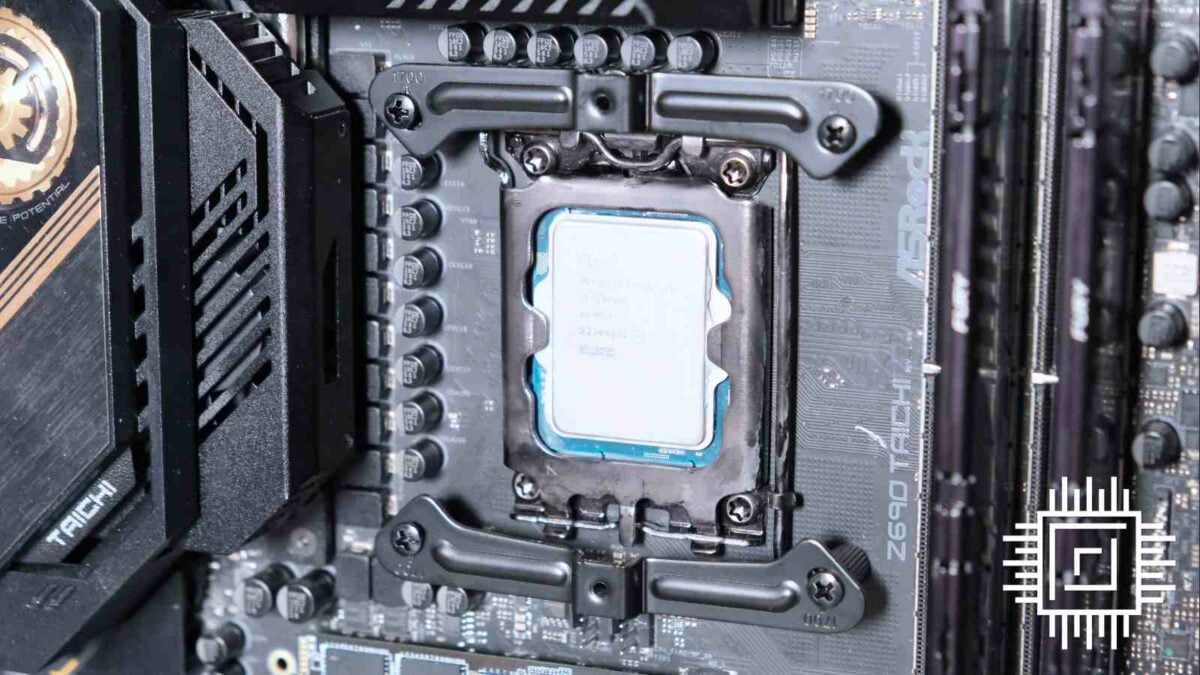
Intel has similarly broad compatibility, covering LGA 1700, 1200, 1150, 1151, and 1155. I still find it fantastic that all of this comes from a single bracket, and you just need to be mindful of which holes you slot the standoffs into. Plonking Light Loop 240 on top of our Intel Core i9-13900K system is a doddle. No Allen keys or fiddling with retention brackets, just good old-fashioned Philips head and a symmetrical approach that means it doesn’t matter which bracket is top or bottom.
Keeping things simple, be quiet! gives you a tiny tube of thermal paste with just enough for a single serving. Some might prefer pre-applied paste, but a pea-sized dot or single sausage does the trick just fine. Generally, we prefer a mid-sized fab in the middle and four smaller dots in each corner for the best coverage.
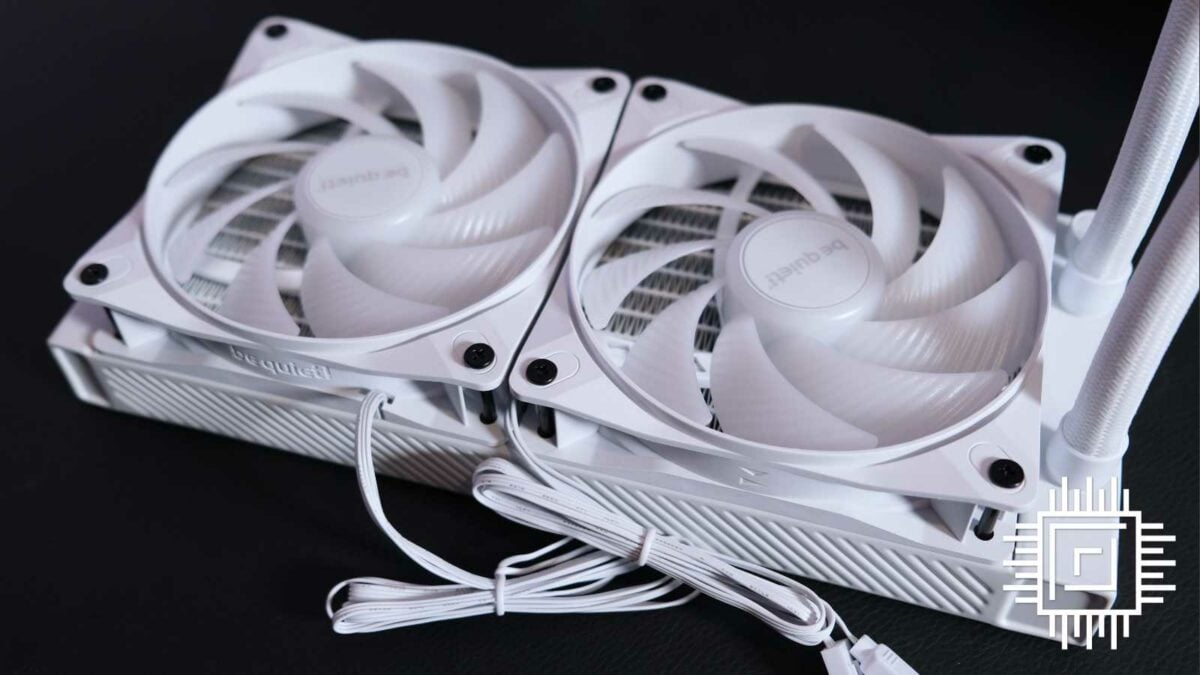
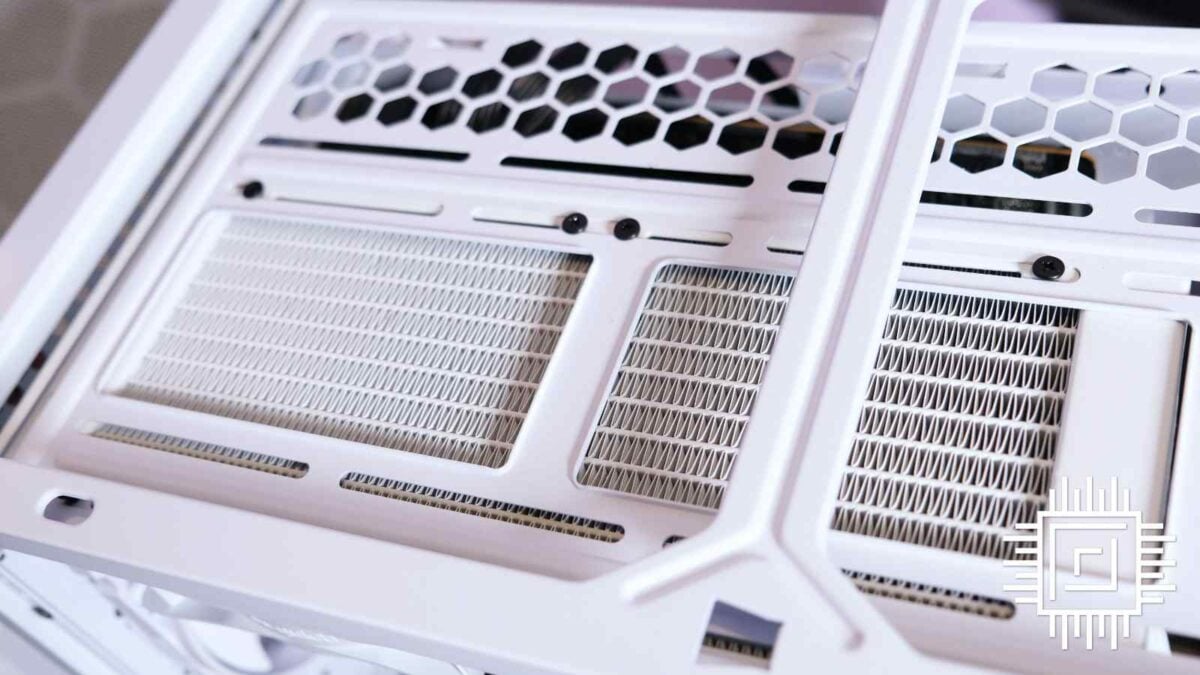
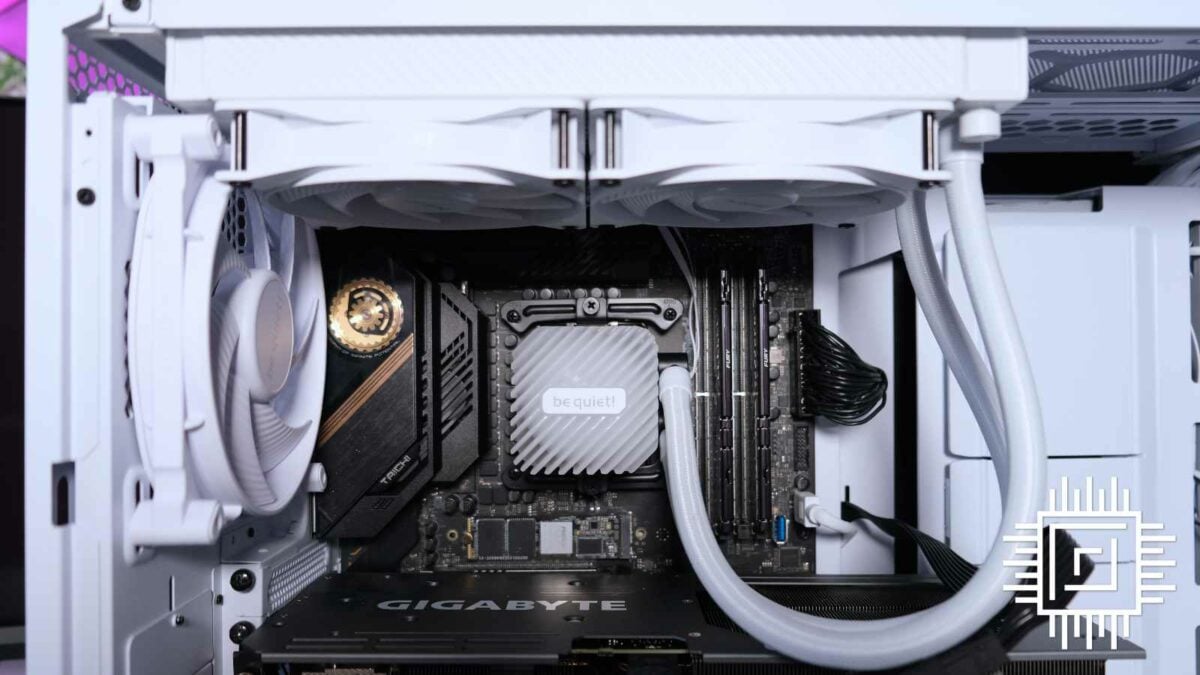
Once you’ve fixed the fans to the radiator and the block to the CPU, be quiet! gives you enough slack to feed the wires through to the back. Since the cables are the same colour as the AIO, keep in mind that it might show up against your motherboard. Still, it’s on the neater side, stretching to the ARGB hub without issue. If all goes well, you’ll notice it light up like a Christmas tree.
Performance
Right out the gate, be quiet! positions Light Loop 240 well, touting that it’s primed and ready for top-end AMD and Intel chips. Our tests include throwing coolers at our beastly Intel Core i9-13900K and running Cinebench 2024 to record noise, temperatures, and scores at 600, 1,200, and max RPM, to see how performance scales under extreme load.
Cinebench 2024
| be quiet! Light Loop 240 | |
|---|---|
| 253W at 600RPM | 1,855 |
| 253W at 1,200RPM | 1,937 |
| 253W at Max RPM | 2,012 |
| 153W at 600RPM | 1,793 |
| 153W at 1,200RPM | 1,823 |
| 153W at Max RPM | 1,880 |
Maintaining the full 253W power draw and top-line frequency is challenging for coolers far larger than this one. Our goal is to see how it fares with wattage as thermal throttling inevitably kicks in and to see whether the same occurs in games. We witness a minor drop off at the lowest fan speed.
Noise levels
| Noise at 600RPM | Noise at 1200RPM | Noise at max RPM | |
|---|---|---|---|
| be quiet! Light Loop 240 | <30.2 | 35.2 | 46.2 |
| Arctic Liquid Freezer 420 ARGB | <30.2 | 38.3 | 46.9 |
| MSI MAG CoreLiquid E360 | 31.2 | 40.2 | 52.6 |
| be quiet! Pure Loop 2 280 | 31.1 | 34.8 | 46.0 |
The weight of all that RGB hasn’t bogged down these blowers one bit. As you can tell, it’s tough to go wrong with two high-speed Light Wings LX PWM on top of a radiator, likely thanks to their nine thinner blades doing all the heavy lifting without adding a noticeable noise tax.
At 600rpm, the AIO is practically inaudible to the point our sound meter can’t even read it. Doubling this to 1,200rpm is barely a whirr at 35.2dBA, although expectedly louder than bigger alternatives on be quiet! Pure Loop 2 280. Its max 2,100rpm is on the quicker side, but it doesn’t add a great deal of noise at 46.2dBA. It’s noticeable, but nothing that would bother you through headphones.
Temperatures
| 253W 600RPM | 253W 1200RPM | 253W Max RPM | 153W 600RPM | 153W 1200RPM | 153W Max RPM | |
|---|---|---|---|---|---|---|
| be quiet! Light Loop 240 | 96.1 | 95.0 | 94.3 | 79.1 | 72.9 | 70.1 |
| Arctic Liquid Freezer 420 ARGB | 90.1 | 81.5 | 79.2 | 68.5 | 63.4 | 61.2 |
| MSI MAG CoreLiquid E360 | 87.2 | 86.0 | 82.0 | 71.9 | 62.2 | 59.7 |
| be quiet! Pure Loop 2 280 | 91.8 | 89.3 | 85.5 | 76.7 | 65.9 | 61.8 |
As the smallest cooler we’ve tested yet, it’s no surprise that it runs a little hotter than others in the same intensive tests. That said, I’d argue it held its own better than expected. It doesn’t trip up for a moment at 153W and punches above its weight at higher wattages.
Most coolers encounter thermal throttling at 253W and Light Loop is no exception. Sustaining such a larger power draw regularly triggers the protective measures of our ASRock Z690 Taichi motherboard, which ramps fans up to 100% the moment the CPU hits 100°C. That said, it managed to maintain 207W at 600rpm, 232W at 1,200rpm, and a staggeringly close 247W at max 2,100rpm, all while hovering between 94°C and 96°C.
Gaming
Pitting Light Loop 240 against extreme rendering tasks doesn’t paint a full picture. It struggles with the heaviest multi-core workloads primarily because of its size, even if it gives us a good point of comparison. Gamers, on the other hand, won’t notice the same throttling.
Take Far Cry 6, for example. Running the game using its ‘Ultra’ graphics preset, with DXR reflections and HD textures enabled, we get 127fps without breaking a sweat at 67°C on the CPU. Cyberpunk 2077 is also notoriously demanding, yet Light Loop manages 100fps at 68°C while running the game at ‘High’ settings on 1440p with ray tracing and DLSS on. Point is, those stressing their CPU to extremes may favour a 280 or 360 radiator, but for gamers, there’s still merit to a smaller, more affordable 240.
Conclusion
Eye-catching AIO coolers are a dime a dozen nowadays, but Light Loop stands out as one of the most dazzling yet. be quiet! made it for a specific crowd with some of the brightest RGB in the game, but the reactor-style aesthetic has me hooked. A hot-swappable logo would’ve added a nice final touch, but I’m equally proud to shine a spotlight on be quiet! given the quality on display.
The lack of 280 or 420 options will undoubtedly disappoint 140m enthusiasts, but this 240mm model ticks all the boxes you’d expect. It won’t stand up to the might of bigger alternatives, but the high-quality Light Wings LX fans and V2 ARGB hub are welcome upgrades over their predecessors and fantastic for gaming.
Price-wise, there’s still more value in Arctic Liquid Freezer III ARGB considering even the 420mm model is cheaper, but Light Loop has the edge in compatibility for Intel CPUs. It’s just $10 more expensive than Pure Loop 2 240 and a whole lot prettier, meaning I have no trouble recommending this little nightlight for space-constrained rigs. Just be sure to include a tempered glass window, otherwise you’re doing this cooler a disservice.
Verdict: a tantalisingly beautiful AIO cooler that’s just as much substance as it is style.


